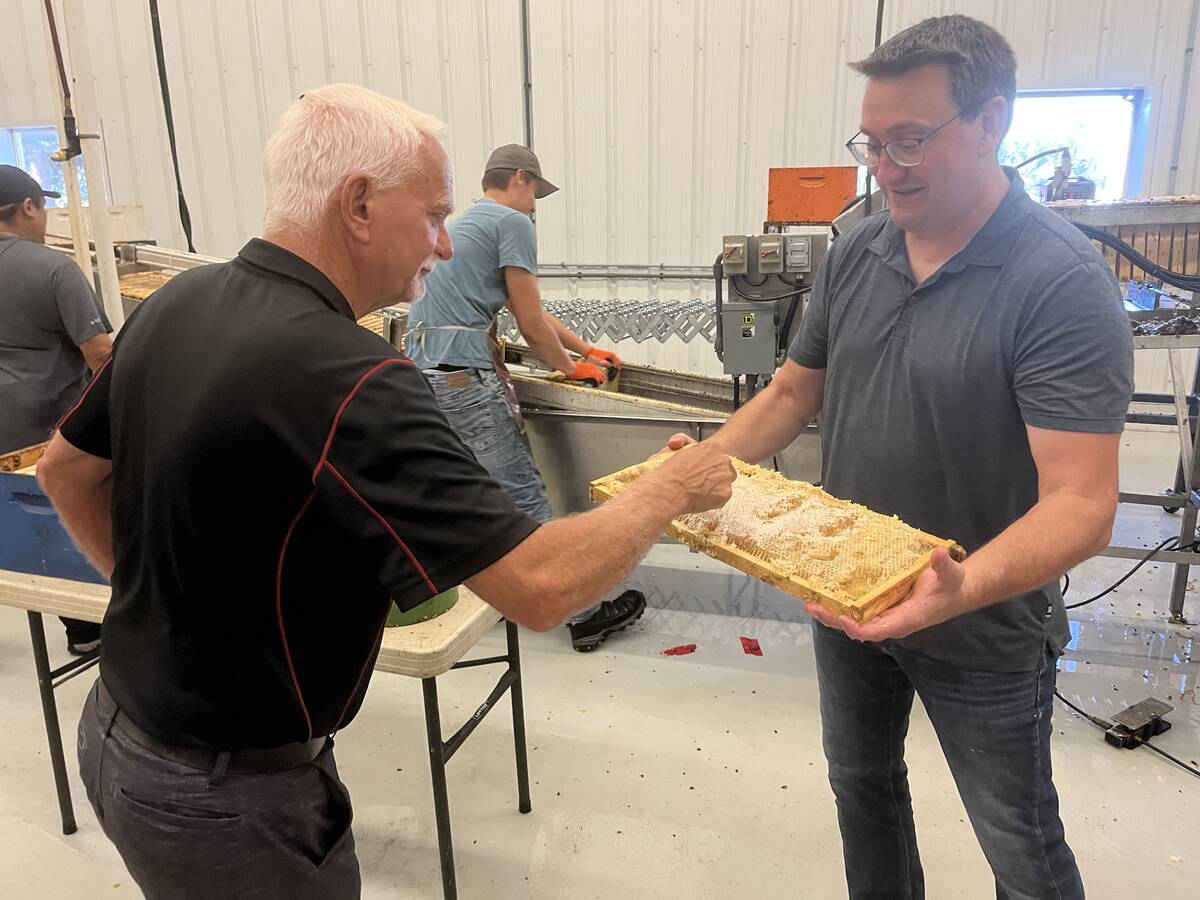WINNIPEG – Farmers get too many exemptions for their vehicles, two
enforcement officials told a national safety conference Nov. 4.
Until recently, combines, seeders and other slow-moving farm vehicles
did not have to have the same warning lights and symbols as commercial
vehicles when travelling Manitoba roads.
Five deaths from three collisions with farm equipment changed that. The
public outcry led Manitoba to legislate tough rules in 1997 to add
visibility to agricultural machines moving on public roads. Those rules
Read Also

Alberta honey business ‘thrives’ despite bumpy beginnings
Thrive Honey showcases its honey production in market where Alberta produces 40 per cent of all honey produced in the country
have been adopted by several provinces and are being considered by
American states.
But that’s still not enough, said Elmer Hanson of the Winnipeg Police
Service. As a former farm boy, he knows the temptations for an
unlicenced underage driver to sneak a grain truck across a highway to
another field.
Inexperienced drivers are a problem, said Craig Black of Manitoba’s
transportation department. He said one official stopped a 17-year-old
driver with a basic licence who was driving a B-train on the highway.
Drivers who don’t know how long it takes to stop such big vehicles may
get caught in collisions at railways or highway crossings.
Hanson said in one week in 1998, he inspected 14 farm grain trucks on
Winnipeg streets. Only one of them passed the safety inspection and
eight were towed from the scene as undriveable.
He said commercial trucks weighing more than a tonne must be inspected
annually, but in Manitoba, farm grain trucks of this size or larger
only have to be inspected when they are first plated.
“I don’t say all farm vehicles are bad, but there are some,” Hanson
said. “I understand today’s economy, but should we cut safety?”
Manitoba has about 30 percent more injuries from vehicle accidents than
Alberta or Saskatchewan, said Paul Allen, manager of road safety for
Manitoba Public Insurance.
He told the conference that 53 percent of Manitoba’s vehicle injuries
happen in rural areas, where only one third of the population lives.
Allen said enforcement is part of the problem. Saskatchewan police hand
out 300 more tickets per week than their counterparts in Manitoba. As
well, the public tends to be more safety conscious in Saskatchewan,
with more doing up their seat belts.
“Manitoba people need to be motivated to change,” Allen said.
“Education and better engineered roads are costly and time consuming.”
The best bet is working with the next generation, which is learning in
schools how to drive and farm safely.
If Manitobans don’t learn to drive more safely, it will cost them as a
society. Allen said Manitoba Public Insurance estimates that by 2007,
permanently injured people will cost the system $1 billion a year,
double the present bill.
















